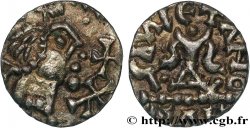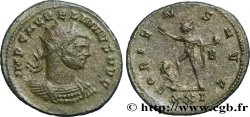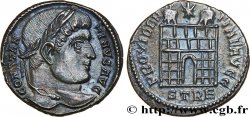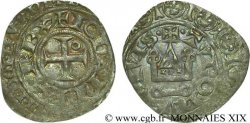v50_0112 - MONEDAS DE LOS MEROVINGIOS - BANASSAC (BANNACIACO) - Lozere Triens au type de CHARIBERT II (528-531)
MONNAIES 50 (2011)
Precio de inicio : 1 500.00 €
Valoración : 2 500.00 €
Precio realizado : 1 600.00 €
Número de ofertas : 2
Oferta más alta : 2 100.00 €
Precio de inicio : 1 500.00 €
Valoración : 2 500.00 €
Precio realizado : 1 600.00 €
Número de ofertas : 2
Oferta más alta : 2 100.00 €
Tipo : Triens au type de CHARIBERT II (528-531)
Fecha: VIIe siècle
Nombre del taller / ciudad: Banassac (48)
Metal: oro
Diámetro: 14,5 mm
Eje de acuñación: 3 h.
Peso: 0,99 g.
Grado de rareza: UNIQUE
Comentarios sobre el estado de conservación:
Monnaie sur un flan large et régulier avec le droit et le revers complets. Le métal est de mauvaise qualité, avec une teinte plus sombre sur les parties les plus en reliefs, comme pour les monnaies fourrées ou en très bas or de cette époque
N° en los catálogos de referencia :
Pedigrí:
Cet exemplaire est le n° 1343 de MONNAIES 36
Anverso
Titulatura del anverso: + BANNIACIACO FIT +.
Descripción del anverso: Tête diadémée à droite, diadème et cou perlés, dans un grènetis intérieur ; légende circulaire commençant à six heures et grènetis extérieur.
Reverso
Titulatura del reverso: IONAN NOEM.
Descripción del reverso: Calice à deux anses, surmonté d’une croisette.
Comentario
Ce triens semble unique, avec la légende + BANNIACIACO FIT + et le grènetis intérieur au droit. Au revers, le nom du monétaire est confus et ne correspond à rien de tout ce qui est publié. L’alliage est très mauvais, mais c’est souvent le cas sur les frappes tardives. Faut-il conclure qu’il s’agit de l'œuvre d’un faussaire de l’époque de Charibert (sans prendre le risque de nommer le roi sur la monnaie) ou bien d’une frappe officielle reprenant un type plus ancien à une époque de pénurie de métal ?.
This triens seems unique, with the legend + BANNIACIACO FIT + and the inner beading on the obverse. On the reverse, the mint's name is confusing and does not correspond to anything published. The alloy is very poor, but this is often the case on late strikes. Should we conclude that this is the work of a forger from the time of Charibert (without taking the risk of naming the king on the coin) or rather an official strike using an older type at a time of metal shortage?
This triens seems unique, with the legend + BANNIACIACO FIT + and the inner beading on the obverse. On the reverse, the mint's name is confusing and does not correspond to anything published. The alloy is very poor, but this is often the case on late strikes. Should we conclude that this is the work of a forger from the time of Charibert (without taking the risk of naming the king on the coin) or rather an official strike using an older type at a time of metal shortage?







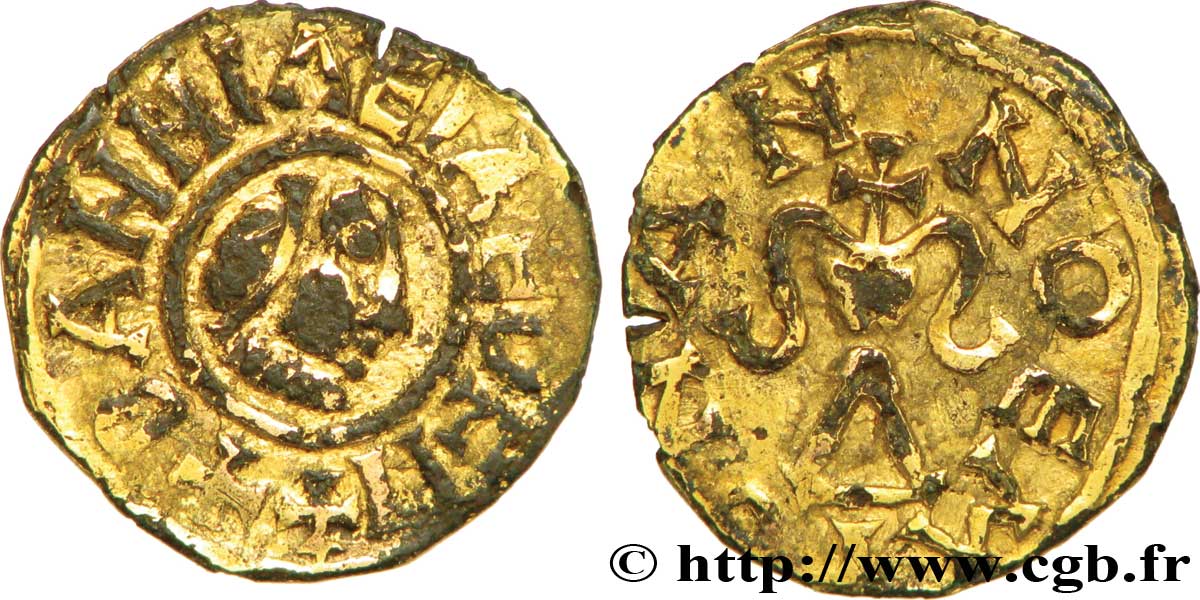
 Informar de un error
Informar de un error Imprimir la página
Imprimir la página Comparte mi selección
Comparte mi selección Haz una pregunta
Haz una pregunta Consignar / vender
Consignar / vender
 Descriptivo
Descriptivo
